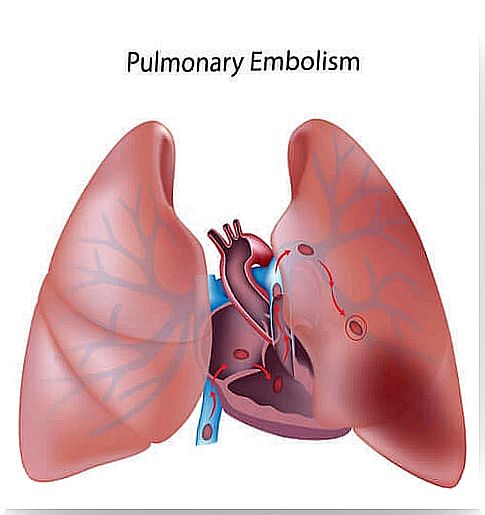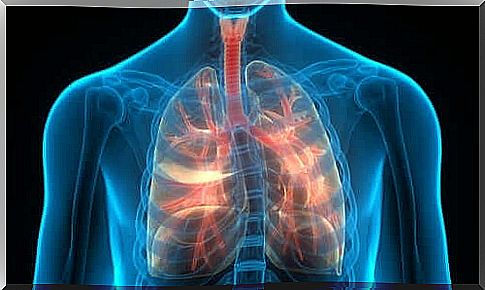Everything You Need To Know About Pulmonary Thromboembolism

Pulmonary thromboembolism or pulmonary embolism is a life-threatening disease that occurs when parts of a thrombus detach from some part of the venous territory, migrate and become embedded in the pulmonary arteries.
In most cases, the emboli come from deep venous thrombosis of the extremities.
All of this results in a defect in the oxygenation of the lungs. It’s a major medical emergency. Furthermore, its diagnosis is not easy as there are few signs that can guide the doctor.
The incidence of pulmonary thromboembolism is estimated to be 1 case per 1,000 inhabitants per year, although the actual number is likely to be higher. According to data from the Ministry of Health of Spain, for example, in 2010, 22,250 cases were diagnosed, with a mortality rate of 8 to 9%.
Causes of pulmonary thromboembolism

In most cases, about 95% of them, the thrombus or clot forms in the veins of the lower limbs. It then migrates to the pulmonary artery.
It could also be air or fat. In the first case, we are facing a gaseous embolus and, in the second case, we are facing a fatty embolus. This occlusion mainly affects the lungs and heart :
- A part of the lungs does not receive venous blood, which is poor in oxygen and therefore will not be able to oxygenate it. This fact will negatively affect the oxygen that will later reach the rest of the patient’s organs and tissues.
- The heart will continue to pump blood to the lungs, but it will encounter an obstacle with occlusion. In turn, pressure will build up inside the pulmonary artery, weakening the heart’s right ventricle, the chamber that delivers oxygen-free blood to the lungs.
Risk factors
There are several risk factors that favor the onset of pulmonary thromboembolism. The most important are:
- Lower limb fractures or recent surgeries.
- Prolonged rest or immobilization.
- Long trips (more than 8 hours).
- Hypercoagulable states.
- Cancer treatment and chemotherapy.
- Obesity.
- Smoking.
Symptoms of pulmonary thromboembolism

The clinical manifestations of pulmonary thromboembolism are nonspecific. This is why it is difficult to make an early diagnosis. Some symptoms that may appear are:
- Asphyxiation sensation : Small emboli that do not cause symptoms can produce this sensation, potentially the only symptom when there is no pulmonary infarction.
- Fast breathing : accompanied by anxiety and agitation.
- Acute chest pain : especially when the person takes a deep breath.
- Dizziness, fainting or convulsions.
- Cyanosis or sudden death : these symptoms may appear in cases where the patient has more than one large occluded pulmonary vessel.
- Cough, fever and bloodstained phlegm.
People with recurrent pulmonary thromboembolism tend to progressively develop symptoms such as chronic asphyxia, swelling of the ankles or legs, and weakness over weeks, months, or years.
Treatment
Treatment in the acute phase of pulmonary thromboembolism aims to stabilize the patient, relieve symptoms, resolve vascular obstruction and prevent further episodes.
These goals are usually achieved with the administration of anticoagulant medications intravenously. This treatment is given for the first 5 to 10 days. The drug of choice for the treatment of pulmonary thromboembolism is heparin.
In critically ill patients or in those who, for some reason, cannot receive anticoagulant medication, other treatments, such as fibrinolysis, are needed to accelerate clot dissolution. A filter can also be placed in the vena cava to prevent new thrombi from migrating into the lung.
Finally, when the patient is at home, oral anticoagulant medications will be prescribed. The most widely used and known is Sintrom. Generally, its administration is indicated for a minimum period of 3 months.
In patients at increased risk for pulmonary thromboembolism, this quarterly period is often prolonged, and the drug may have to be taken for life.









